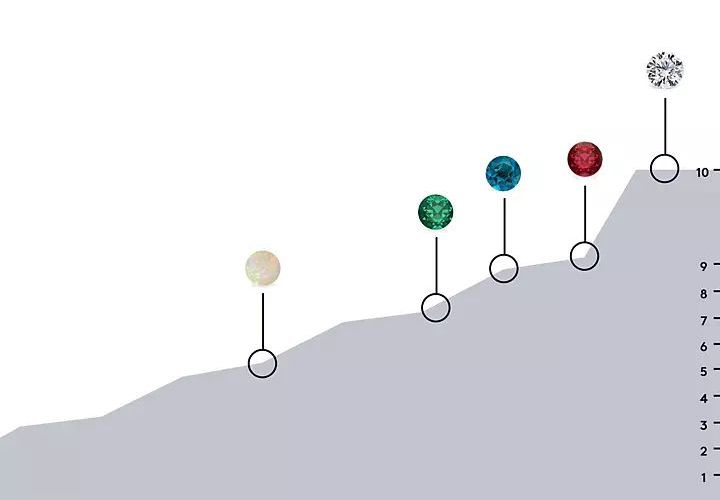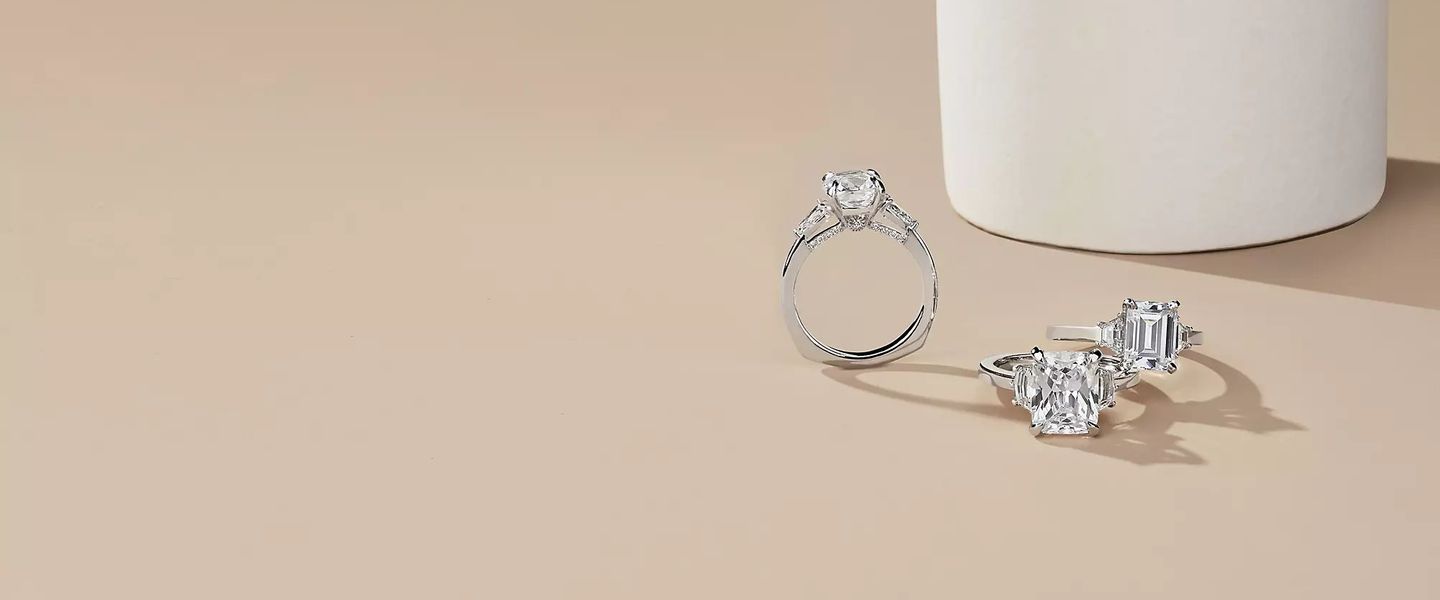Moissanite and Lab Diamond Origins
Originating in the stars, moissanite was discovered in a meteor crater in 1893. Natural moissanite is exceptionally rare and jewelry featuring this stone includes only lab made varieties of moissanite.
Natural diamonds are also rare as their number of gems is finite. Because of this, lab diamonds have been growing in popularity. Just as with moissanites, lab diamonds are created in laboratory settings. For lab diamonds, there are two main processes that “grow” these gems over time.
Because both moissanites and lab diamonds are created in controlled scientific settings, they can be grown endlessly at scale.
The laboratory origin of both moissanite and lab grown diamonds means that these gems do not have any intrinsic rarity. Instead, they are both valued for their unique appearance and chemical properties.
Comparing the Appearance of Lab Grown Diamonds vs Moissanite
When it comes to the appearance of lab grown diamonds vs moissanite, it is simple to tell the difference between these two gems. While these gems may look similar from afar to the untrained eye, their light refraction behaviors and sparkle are vastly different. Upon close inspection, you will notice differences in the brilliance of a lab diamond compared to moissanite. Depending on the individual gemstone’s 4Cs, a lab diamond will generally return a white sparkle while moissanite will sparkle with flashes of rainbow colors, often known as a disco ball or rainbow effect. This is due to differences in the refractive properties of both gems.
Diamonds, including lab varieties, are available in a wide range of colors but they will most commonly be colorless or white. Moissanite, on the other hand, can have a yellow or green tint. Build up of grime can make a moissanite look cloudy, but regular cleaning helps to keep it sparkling.
HARDNESS & WEARABILITY
Lab diamonds are a perfect 10 on the Mohs scale, meaning they’re an incredibly durable gem that’s ideal for daily wear. With normal wear, it is difficult to break, crack or chip a lab diamond. Moissanites, on the other hand, are 9.25 on the Mohs scale. This means they are also very durable, but a little less hardy than diamonds.

Chemical Differences for Lab Diamonds Versus Moissanite
There are numerous differences when looking at the chemical composition of lab diamonds vs moissanite. Moissanites are made in a laboratory by applying pressure and additional processes to silicon carbide. The resulting gem is one with strength and double refraction.
Lab made diamonds are real diamonds, bringing tightly packed carbon atoms for unparalleled durability, reflection and refraction. The pure carbon of diamonds makes them exceptionally durable and visually stunning.
With dissimilar chemical compositions and molecular patterns, these gems behave differently in terms of optics and durability. Moissanites often shine with multiple colors in a rainbow effect while diamonds typically show pure white brilliance. The chemical differences of moissanite vs lab diamonds means that lab diamonds are more durable due to their increased hardness and identical properties of natural diamonds.
Gradings and Paperwork
When browsing lab grown diamonds for sale, you’re able to choose gems that are GIA graded for their qualities in line with the 4Cs of diamonds. Lab diamonds are sold by carat weight along with their cut, color and clarity. Moissanites typically do not include this kind of reporting and are often sold by millimeter measurement rather than carat and are generally not graded along the 4Cs.
FAQs About Moissanite and Lab Diamond Comparisons
Are moissanite gems real diamonds?
No, moissanites are not real
diamonds. They have different chemical compositions and do not look identical to diamonds.
What is the difference between lab diamonds and moissanite?
Lab diamonds are chemically and optically identical to natural diamonds. Moissanites are different gems with their own chemical and optical properties. Lab grown diamonds are considered diamonds, but moissanites are not actually diamonds.
What is a diamond simulant?
A diamond simulant is a gemstone or material that mimics the look of a diamond. But, it is chemically different from diamonds. Moissanites are considered diamond simulants.
How easy is it to tell the difference between lab diamonds and moissanite?
It is easy to spot the difference between lab diamonds and simulants such as moissanite. Lab diamonds, because they are chemically identical to natural diamonds, will return a white brilliance. Moissanites will return a multicolored brilliance. This is the fastest way to tell the difference between the two without any special equipment.
Specialized equipment makes it even easier to determine whether a gem is a lab diamond or a moissanite. Diamond testers can quickly distinguish the two. Magnification with a loupe or more enhanced systems can reveal the structural differences between these two stones.
What are the pricing differences for lab grown diamonds vs moissanites?
Lab grown diamonds and moissanites are both priced lower than natural diamonds. Because lab grown diamonds are actual diamonds, they can command higher prices.
